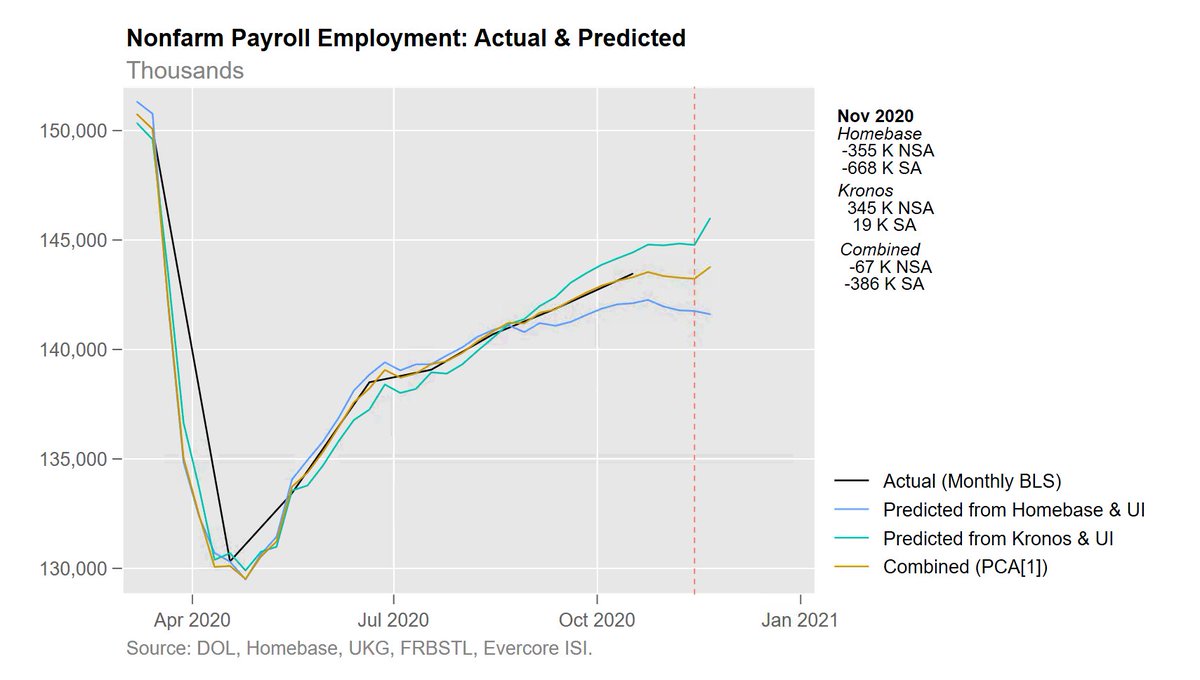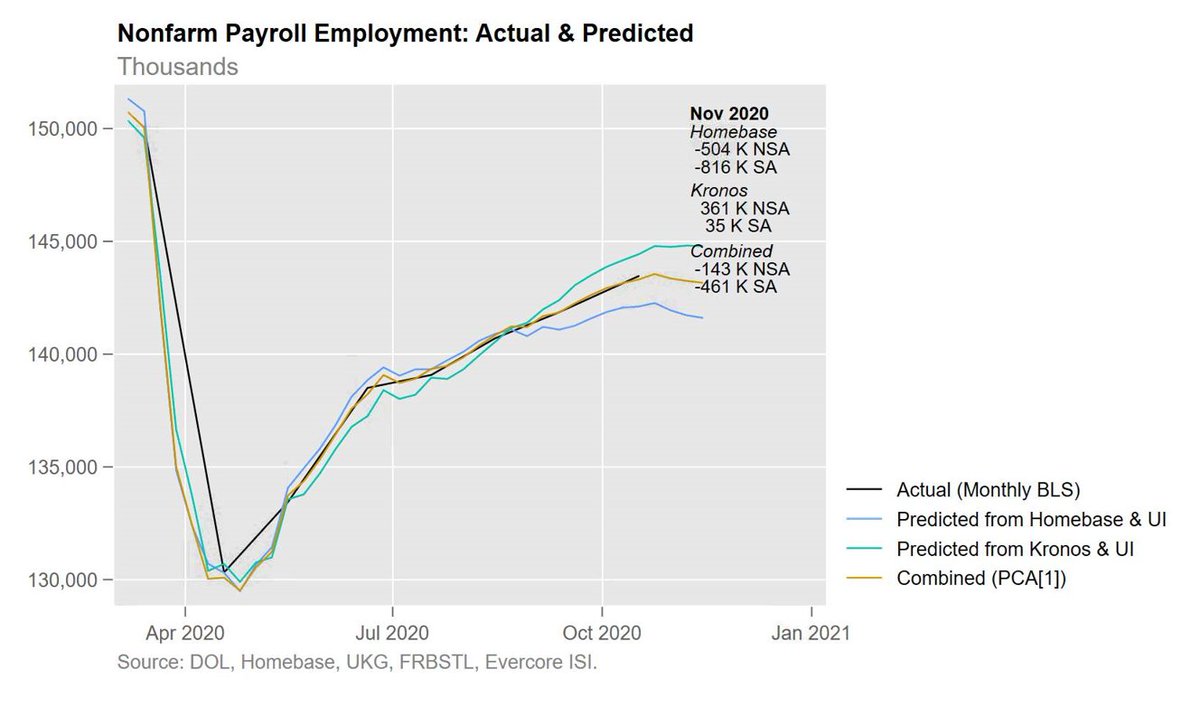
Canada and the US were the two most generous advanced countries when it came to direct aid (Germany's fiscal response looks bigger on paper, but the vast majority of it was just in the form of loan guarantees or other non-direct aid). /1
https://twitter.com/snoble/status/1342546813895598080
Canada gave the equivalent of USD $1,560 per month to its jobless workers through the CERB program, *in lieu of* their version of UI (which they call EI). This went until October. Since in theory you weren't supposed to get both EI & CERB, CERB shouldn't have counted as EI weeks.
The US by contrast gave USD $2,600 per month to all UI recipients, *on top of* their UI benefits, through July 31. That includes gig economy PUA beneficiaries who got around $200 per week base benefits in their program; Canada's CERB was meant to address gig workers too.
The US jobless then got another USD $1,300 per month for up to 6 weeks from Aug 1 through mid-September through the LWA program; in reality this largely came out as lump-sum catch-up payments.
But of course, to get these payments in the US you had to be in the UI system, which meant you were using up weeks of eligibility. The CARES Act added another 13 weeks of UI benefits and set the PUA lifespan to 39 weeks...
...but without this new bipartisan bill, PUA and the extra 13 weeks in PEUC expires tomorrow.
So without the bipartisan deal, the US will have been much more generous through mid-September, but Canadian CERB + EI will have lasted longer.
So without the bipartisan deal, the US will have been much more generous through mid-September, but Canadian CERB + EI will have lasted longer.
With the bipartisan deal & another 11 weeks of PUA & PEUC (14 weeks if you're already enrolled at the end), plus another USD $1,300/month top-up, the US will fairly decisively have been more generous to the jobless on average since Mar, tho w/ much more real-time uncertainty
To sum up, if you were jobless you got, all in:
Canada (under CERB):
USD $1,560 per month, through end-September
US (regular UI + FPUC):
Typically USD $3,900 per month, through end-July
US (PUA + FPUC)
Typically USD $3,467 per month, through end-July
Canada (under CERB):
USD $1,560 per month, through end-September
US (regular UI + FPUC):
Typically USD $3,900 per month, through end-July
US (PUA + FPUC)
Typically USD $3,467 per month, through end-July
US (regular UI + LWA)
Typically USD $2,600 per month, Aug 1 - mid-Sep
US (regular UI only)
Typically USD $1,300 per month, mid-Sep - present
US (regular UI + FPUC, if bipartisan deal signed)
Typically USD $2,600 per month, end-Dec - mid-Mar/start-April
Typically USD $2,600 per month, Aug 1 - mid-Sep
US (regular UI only)
Typically USD $1,300 per month, mid-Sep - present
US (regular UI + FPUC, if bipartisan deal signed)
Typically USD $2,600 per month, end-Dec - mid-Mar/start-April
• • •
Missing some Tweet in this thread? You can try to
force a refresh











